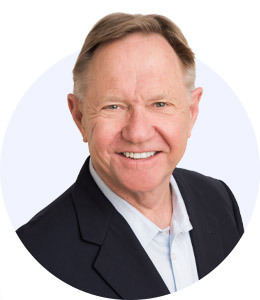This column is about how to lead change. I am starting with a story on traffic roundabouts. They are a great example of leading change due to people’s initial reaction to them.
I live in Pensacola, Florida. I live close to 17th Street. It intersects with Main Street (Bayfront), which is a major thoroughfare for people going to and from Pensacola to Gulf Breeze and Pensacola Beach. When a new bridge was announced, the plans included a roundabout. It was the roundabout that got the most attention.
While it turned out to be the first completed roundabout in the downtown area, this was not Pensacola’s first conversation on the subject. Previous roundabout proposals were met with loud citizen concerns.
Since the bridge roundabout became operational, I have traveled on it almost daily. My perception is it is working quite well. There are certainly fewer traffic jams on Bayfront than prior to the roundabout. I have found when something works, those who were against it in the beginning tend to be silent. It’s rare to hear, “I guess we were wrong.”
This recent roundabout experience brought back a time three years ago when I was presenting in a city on ideas in my book Building a Vibrant Community. After a day workshop, I was getting ready to speak at a town hall session in the city council chambers. It was a cold, snowy night. As we were walking from the workshop to city hall, I was envisioning a very sparsely attended town hall. The movie This Is Spinal Tap came to mind. As we walked in, the place was packed. It was standing-room only. The mayor looked at me and said, “We have not had a crowd like this since roundabouts were on the agenda!”
What is my point? When something new is introduced, many people’s first reaction is, “I don’t like it.” Roundabouts are the perfect example of a change that people initially resist. I like to use roundabouts when illustrating the progression from defiance to compliance to reliance, which is a formula for change I learned from my cousin Al, who has a real gift for making complex things simple (and memorable).
I have studied change for years. When I present on the topic, I share the names of experts such as Maslow, Kotter, Chip and Dan Heath, etc. The formula for change that gets the most attention is “defiance, compliance, reliance.”
My message for leaders is to not be dismayed by initial defiance to a new idea or a change. It is normal for people to resist change. What a leader needs to focus on is how to help the person accept or comply with what is being recommended. Once they’ve moved through compliance, they will usually land at reliance, meaning they have come to depend on the new and better way of doing things.
Here are some tips for moving people through the phases of change.
- Always connect back to the why.We can’t assume the why is obvious. We need to explain it in a way that connects to people’s values. For example, in working with Aramark Healthcare, they share with environmental service workers how making sure certain items are in reach of a patient before they leave the patient’s room will help to prevent a fall. This explanation moves a task from “one more thing to do” to “improving patient care.” It also reduces call lights, thus saving nurses time (another win). The better the connection to the why, the faster the compliance will be.
- Assess the skills of the person.Fear of not being successful can create a lack of compliance. A person knows the current way to do something, but they don’t know if they will be able to be successful with the new method, technology, etc. Assuring them that training goes with the required change is vital to moving people to compliance.
- Show empathy.It is normal that during change things will take longer. Let the staff know that you understand that things may get worse (due to the newness of the change) before they get better.
- Recognize those people who are adapting to the new ways.Rewarded and recognized behavior gets repeated. Those not adapting will most likely adapt to the change when they see others being recognized for changing.
- Address the “What is in it for me?” factor.Again, this requires the connecting of the dots. If people see that a change will benefit them in some way personally, or aligns with a belief they have, compliance will follow. Benefits can range from having more time freed up to do their work betterto more job security to the satisfaction that comes from better meeting customer needs.
- Apply consequences if needed. About 90 percent of people will respond to those tips above. For those remaining 10 percent, consequences for not changing will be needed. This can be as simple as a question: “Bob, I notice you are still not using the new method. Can you help me understand why not?” Non-compliance can eventually lead to a dismissal if the person refuses to adjust to the change.
Once compliance is in place and the results are achieved, reliance kicks in. This means that the people can’t fathom going back to the old way because they can now see that the new way works better. An example is having coworkers interview potential new hires. This change can receive some pushback from managers. They may think, It is my job to hire or It will take longer, and we may lose someone or What if the coworkers hire someone I don’t want hired? All of these issues are very solvable. And once the peer review process is in place, the positive results are such that a manager would never think of not involving the coworkers in the hiring process.
I am finding that the change process of defiance, compliance, reliance is quickly understood. It is also interesting how some bristle at the word compliance. Yet being in the healthcare world, my experience is that patients who are the most compliant with their treatment plan have the best outcomes. Those who follow directions get better results.
And yes, back to my original story, roundabouts seem to work. Once people see that they aren’t hard to use and that they do reduce traffic issues, they come to actually like them. Eventually they can’t imagine going back to the old way. They’ve moved to reliance—and usually they, the company, and the customers are better off than before the change was made.

